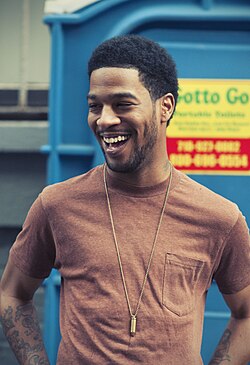Have you ever thought about the profound stories hidden behind the faces of our favorite celebs? Let’s talk about someone who played a crucial role in shaping the creative genius of rapper Kid Cudi Lindberg Mescudi. Who is this man? Lindberg was the father of Kid Cudi, born with a unique heritage, weaving together rich African-American and Mexican-American stories. It’s not every day that we get a peek into how the roots of two diverse cultures come together to shape an unforgettable legacy. So, let’s dive into Lindberg Mescudi’s life and how he became the man who inspired a musical sensation.
Heritage and Early Life
Alright, imagine this: a young Lindberg growing up in Ohio, surrounded by a blend of Mexican and African-American cultures. A lively household, filled with six siblings, where you can guess tales and traditions were as daily as morning coffee! Lindberg’s father, Charles Manitow Mescudi, hailed from Mexico, while his mother, Essie Viola Lawson, added African-American vibrance from Pennsylvania. This cultural mix created a rich environment that celebrated different traditions, stories, and lots of laughter.
Growing up in this colorful atmosphere, Lindberg learned early on the value of embracing differences and celebrating heritage. It’s kind of like having two delicious flavors of ice cream in one cone individually amazing, but mind-blowing together! So, how did this background help Lindberg in life’s adventures? Keep reading to find out.
Bravery in World War II
Here’s a curveball: Lindberg’s life led him to serve in the U.S. Air Force during World War II. Picture a young man, fueled by perseverance, ready to contribute to his country in a time of global uncertainty. He wasn’t just a guy in uniform; he was a symbol of dedication and courage during one of history’s most challenging periods. Lindberg faced the chaos of war with bravery, just like how Captain America would take on enemies with sheer guts and determination.
Imagine navigating through missions, staying focused amid flying bullets, all the while knowing each day was a game of survival. Lindberg’s service wasn’t just a tale of duty; it marked a chapter of bravery that would later resonate through his family, especially with young Scott Mescudi who we know today as Kid Cudi.
Life After the Military
Time for some peacetime action. After the war, Lindberg traded his military boots for a brush and a chalkboard. He juggled life as a substitute teacher and house painter. Talk about versatility! Think of it as being a Swiss Army knife with multiple talents to rely on ready to paint beautiful strokes or fill young minds with knowledge.
By day, he’d share wisdom with students, and by evening, transform spaces with paintbrushes. All this, while balancing work and family life, which, as many of us know, is no small feat! Lindberg’s dedication reflected his commitment not just to building a livelihood, but also to laying down a strong foundation for his family. You’ve got to appreciate someone who never shied away from doing different things to make life work.
The Family Man
Cue the romantic tunes because Lindberg’s love story began with Elsie “Harriet” Mescudi, a delightful school choir teacher. They married back in 1979 when Lindberg was 51 and Elsie was 30 and spent their lives nurturing a home filled with love, laughter, and four kids: Scott (Kid Cudi), Domingo, Maisha, and Dean. It’s almost like scenes from a wholesome family sitcom where every episode ends with a big group hug.
Together, Lindberg and Elsie emphasized the importance of creativity and education. They weren’t just raising kids; they were creating a new kind of legacy, one where artistic expression and a thirst for learning were more than just encouraged they were celebrated, like every family breakfast ending in smiles.
Influencing Kid Cudi’s Art
Here’s where things get emotional. Lindberg passed away in 1995 when Kid Cudi was just 11. The impact of such a loss is heart-wrenching yet profound. Imagine being an impressionable young boy and losing a father figure who showed endless possibilities. This profound loss echoes throughout Kid Cudi’s music the themes of loss, resilience, and mental health struggles are as real as they get.
Songs like “Soundtrack 2 My Life” and “Solo Dolo” become more than just tracks; they’re glimpses into a heart still healing. Kid Cudi’s musical journey is also about keeping his father’s spirit alive, channeling pain and memories into something others can connect with. Lindberg’s influence in Cudi’s art is like an invisible hand guiding his creative process, turning scars into impactful melodies.
Lindberg’s Lasting Legacy
Fast forward to today, and Lindberg’s legacy is still alive and kicking. Through Kid Cudi, Lindberg’s values of hard work and artistic expression ring loud and clear. His life lessons seep into Cudi’s worldview and achievements, almost like using a classic family recipe in every dish. You can taste the love and tradition in every bite or, in this case, every track.
Despite not being known widely outside his family circle, Lindberg’s principles are like roots growing deep into the ground hidden yet vital, quietly supporting a towering tree. Kid Cudi’s success story is intertwined with these values, and it continues to inspire fans everywhere to embrace their unique stories.
Conclusion
And there you have it Lindberg Mescudi, the man behind the music and the enduring legacy of Kid Cudi. We’ve journeyed from his diverse heritage and brave military service to the impact he’s left on his family. Lindberg’s life shows us the power of resilience, creativity, and love.
As we appreciate Kid Cudi’s art and messages, it’s worth taking a moment to honor Lindberg but let’s not forget other similar unsung heroes. [Let’s take this one step further](https://interbusinessnews.com/) and recognize the impacts other fathers, mothers, and mentors have in shaping the creative geniuses of tomorrow. Each of their stories, much like Lindberg’s, isn’t just worthy of acknowledgment they should be celebrated.
Also Read:


